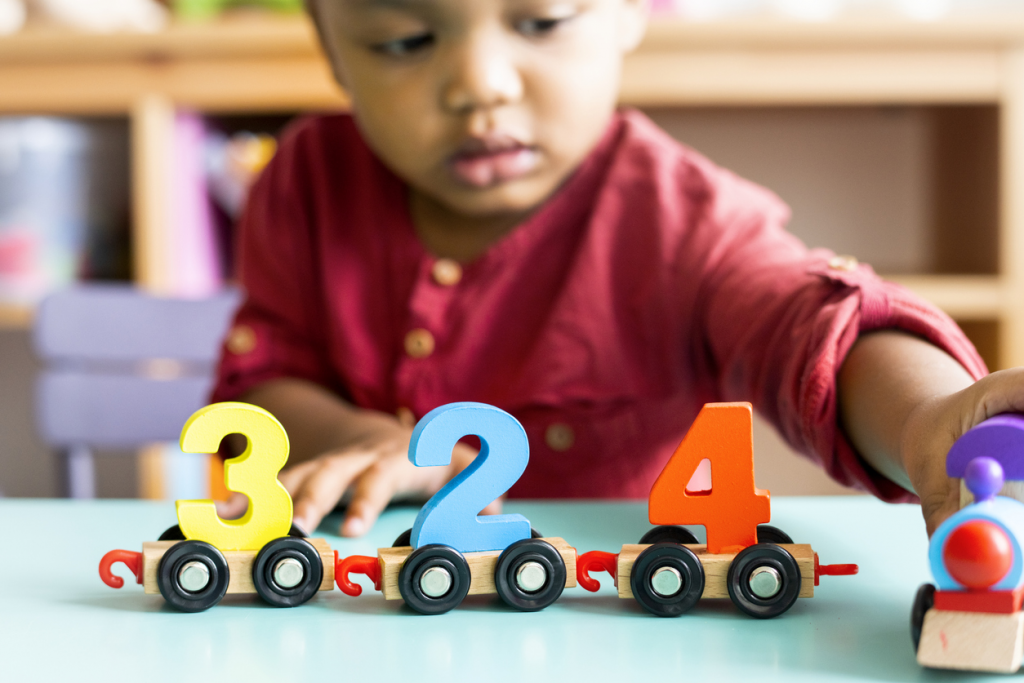Introduce young children to basic math and geometry with fun art projects focused on numbers and shapes
Math makes up the world around us; numbers, shapes, quantities – it’s more than equations. Establishing familiarity with concepts like shapes and numbers is more than just teaching educational basics, it’s an early introduction to simple math-related skills.
Children should be exposed to shapes and numbers from an early age, and art is an interesting and engaging way to nurture a sense of curiosity around concepts that may be slightly above a child’s current learning level.
Consider adding the following activities about numbers and shapes into your child care curriculum to set the foundation for math appreciation.
Shapes and numbers in art
Stained glass shape window: This easy project is not only fun for older toddlers to interact with, but also for babies to look at. Cut a piece of clear contact paper to size and place it against a window with the sticky side out. Fold a thin strip at the top and bottom inward so that it will adhere to the window. Provide a selection of pre-cut shapes made out of tissue paper and encourage little ones to create a design by sticking the shapes onto their sticky window pane. The end result will be a collection of shapes whose colors are softly diffused by the light.
Sponge shape painting: Toddlers love painting. Add some purpose to your paint projects by introducing shapes in a creative and collaborative project. Roll butcher block paper along the length of a table put everyone in an art smock, set out Styrofoam trays with a variety of paint colors, and allow the children to dip sponges that have been cut into shapes into the paint before pressing them onto the paper. Once dry, hang their shape mural up for everyone to enjoy.
Sand number art: Sensory experiences are good for development, so combining that with a number-related activity serves a dual purpose while also adding a fun twist on a creative project. Give each child a piece of colored construction paper with a number written on it in bold marker. Provide a paintbrush, a pot of glue, and a paper plate full of colorful art sand or sterilized playground sand. Help the child use the paintbrush to apply glue to their number, sprinkle sand liberally on top of their paper, and dump off the excess onto a tray or baking sheet to reveal their textured art piece.
Finger stamping to five: Young children often start the journey to counting by using what’s on hand – their fingers. Create a worksheet containing a grid with five numbered squares on it and provide an ink pad for each child. Gently roll one finger in ink before pressing it to the square labeled #1. Repeat with two fingers in the #2 square and continue until each square is filled with its corresponding number of fingerprints.
Children have a natural interest in using various materials to make something new. Use that creative desire to your advantage and find art activities that will help them learn simple educational basics while helping develop a deeper understanding of more complicated subjects.
The Virginia Infant & Toddler Specialist Network helps improve the quality of care for infants and toddlers through extensive resources, services, and education for caregivers. Learn more about how we can help you improve the standard of care.




